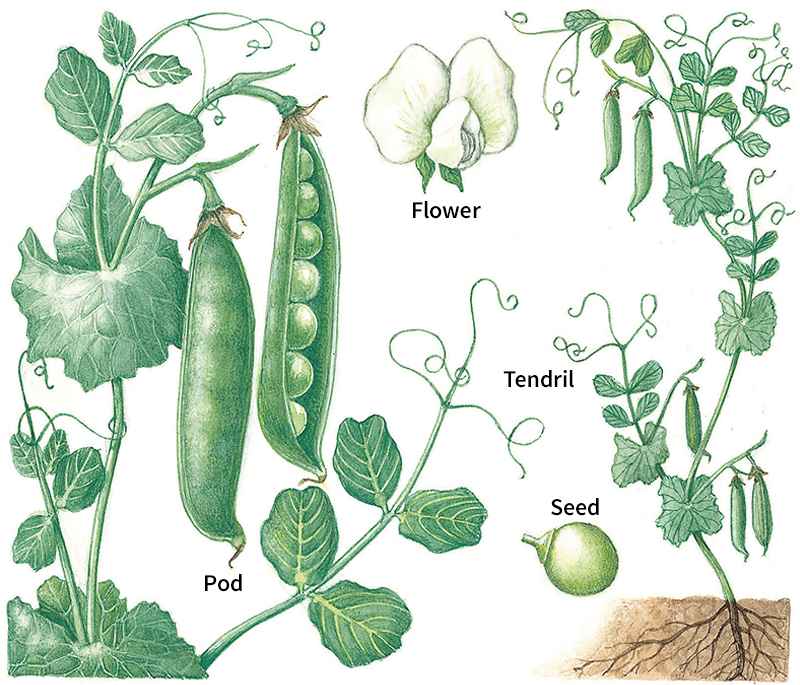Legume, << LEHG yoom or lih GYOOM, >> is any of the plants that belong to the pea family. They make up one of the largest groups of flowering plants. Botanists recognize thousands of species (kinds) of legumes. The group gets its name from the legumes (seed pods) that the plants bear.

Many legumes are of great economic importance throughout the world. Such legumes as beans, peas, and peanuts are valuable foods. Alfalfa, clover, and vetch are important forage and pasture plants. Other legumes yield dyes, medicines, oils, and timber.
Legumes grow in most parts of the world. They vary widely and may be trees, shrubs, or herbs. Many are climbing plants. The flowers of many legumes look like butterflies. The common sweet pea belongs to this group. The flowers of other legumes may be small and regular. The flowers of still others may be irregular, with spreading petals.
Legumes take nitrogen into their roots from the air. Certain bacteria, called rhizobia, live in nodules (knotlike growths) that form along the roots of the plants. These bacteria take nitrogen from the air and change it into forms that can be used by plants. This characteristic makes leguminous plants valuable in agriculture. Farmers often use them to improve poor soil (see Nitrogen).
Each plant mentioned in this article has a separate article in World Book.
